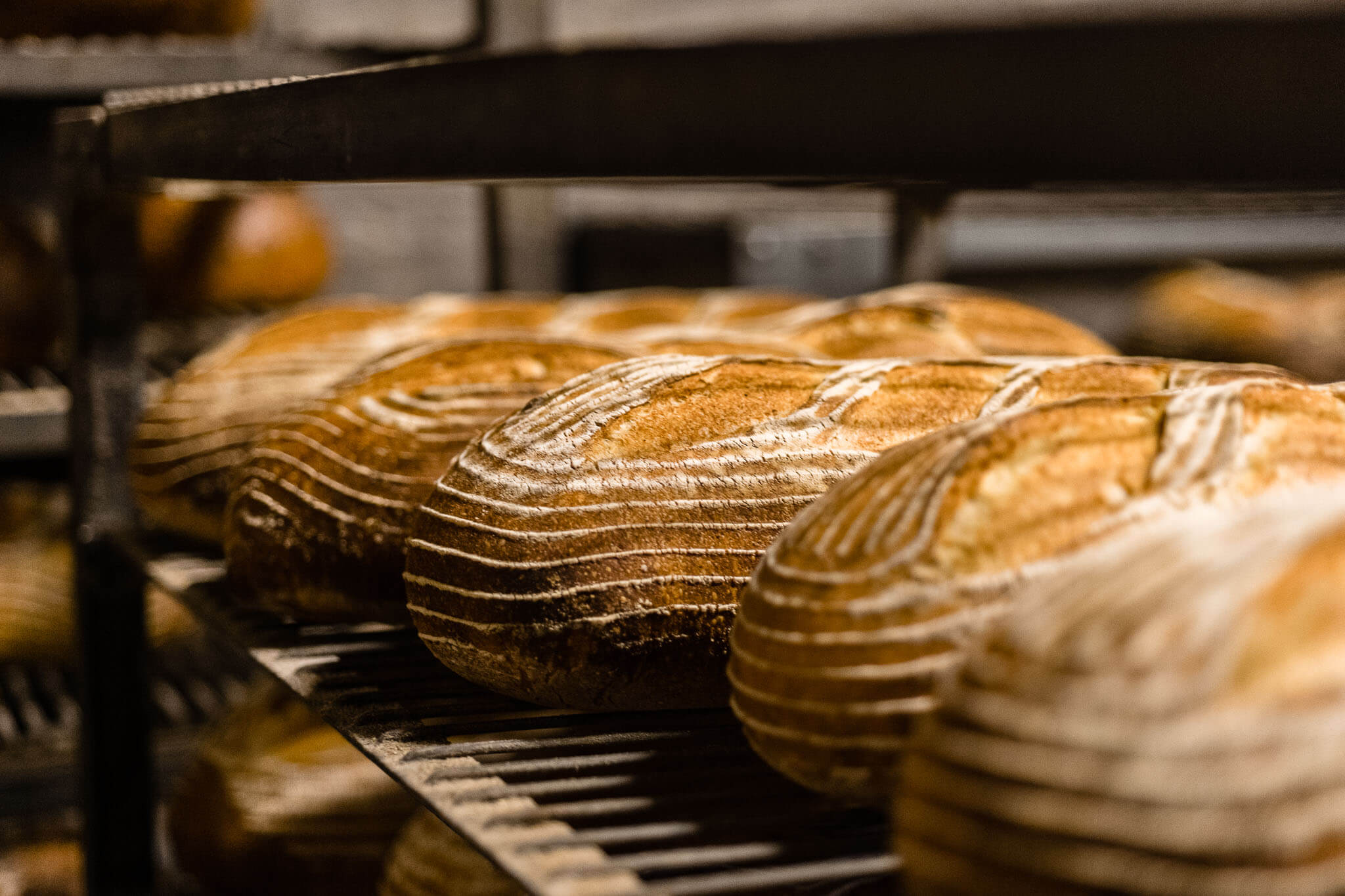The bakery that grows its own wheat
I don’t know of any other bakery in the country that grows their own wheat,” says Nick Ambeliotis, founder and owner of Mediterra Bakehouse. But that is exactly what Mediterra Bakehouse is doing. To understand why, it’s important to go back in history.
How wheat started
Before the turn of the 20th century and the Industrial Revolution, wheat was ground by hand using stone grinders. With the invention of iron and steel rollers, processing wheat changed dramatically. Stone grinding removed the wheat berry, which contains most of the fiber but not the germ, which contains the oils that are rich in nutrients. The new roller mill was able to remove both the wheat and the germ,
resulting in flour that was mostly starch with little nutrients, flavor, or unique characteristics.
With this industrialization also came new types of wheat. Wheat was bred to grow fast, stay stable in different weather conditions, and have high yields. Conventional, modern wheat typically found on every grocery store shelf is just that—cross-bred, often with genetic manipulations to appeal to mass production.
This may be one reason why bread has gotten a bad rap in recent years. Many people blame modern wheat for contributing to the obesity epidemic and the increased awareness of gluten intolerance, as many people cannot easily digest it.
Product consistency
If you are a commercial baker aiming to supply the masses, commercially stable and mass-produced ingredients and products are what you are after. You want to be able to produce a consistent product every time. However, finding the balance of producing a consistent product that is both nutritional and has superior taste while being stable with mass appeal can be accomplished with some patience, time and care.
Nick Ambeliotis has embraced those traits. Ambeliotis never went to culinary school, but became passionate about baking bread and launched a bread bakery.
In 2000, on a religious advisor’s nudge, he took a leap of faith and threw himself into the world of bread baking. After traveling the world for 18 months, working and learning from some of the best bakers in Europe and the U.S., Ambeliotis founded Mediterra Bakehouse.
European baking techniques
He latched on to European techniques—using cold water versus warm when proofing the bread, allowing the bread to rise for over eight hours versus one hour or less, and analyzing all the ingredients he used.
That is why, in 2012, he partnered with a local Arizona farmer and planted 50 acres of heritage grains in Coolidge. Red Fife, Sonoran White, and Durham Blue Beard are the three types of heritage wheat Mediterra grows. Heritage grains like these are older strains of wheat that have been passed down from generation to generation, and have not been manipulated or cross-bred. It has been observed that these grains are better tolerated by people who may be adversely affected by gluten. But more
importantly, they create a more unique, high-quality and better-tasting bread.
“We wanted to invest in and have our hands on growing our wheat because that is how we approach everything else in the bakery,” Ambeliotis explains. “Each loaf of our bread is hand kneaded and shaped, loaves put into the oven by hand, loaves packaged by hand, ingredients scrutinized. Sourcing our own wheat was a simple next step to ensure our techniques matched our quality.”
Additionally, many farmers do not grow heritage grains because they are difficult to grow and take more time to mature, and the economics are difficult to sustain. That’s another reason why the bakery operates its own farm.
Red Fife Reserve
Once the wheat is harvested, Mediterra mills the wheat on its Austrian-imported stone mill and uses that flour in its bread. The breads made using these heritage wheats also result in more complex flavors. The Red Fife Levain is Mediterra’s
premier heritage grain loaf. This bread is different from the others they make in appearance, flavor, and aroma. The Red Fife Reserve has a chestnut-colored crust that is nearly a quarter-inch thick, with a moist and chewy interior crumb.

Baked in the Old World style, this bread is made to last. Mediterra recently started selling 2-pound bags of the heritage grain flour so that home bakers could easily source these rarer heritage grains. The 20 different types of bread Mediterra bakes, including its pecan cranberry, sprouted spelt, and sesame semolina, can be found on its website, www.mediterrabakehouse.com.
Keep up with all of Green Living’s content by visiting our website
.
Claire Natale is a Clevelander who arrived in Phoenix via New York City. She loves exploring the city’s food scene and hiking trails, and is an avid cook. “Communication is key” is a phrase that leads her work as a publicist and writer.









Hello Tom, our Coolidge bakery did close.
Has Mediterra bakehouse in Coolidge Arizona closed?
Looking at their social media and their website https://www.mediterrabakehouse.com, they should still be open.
Where can I buy it in Tucson?